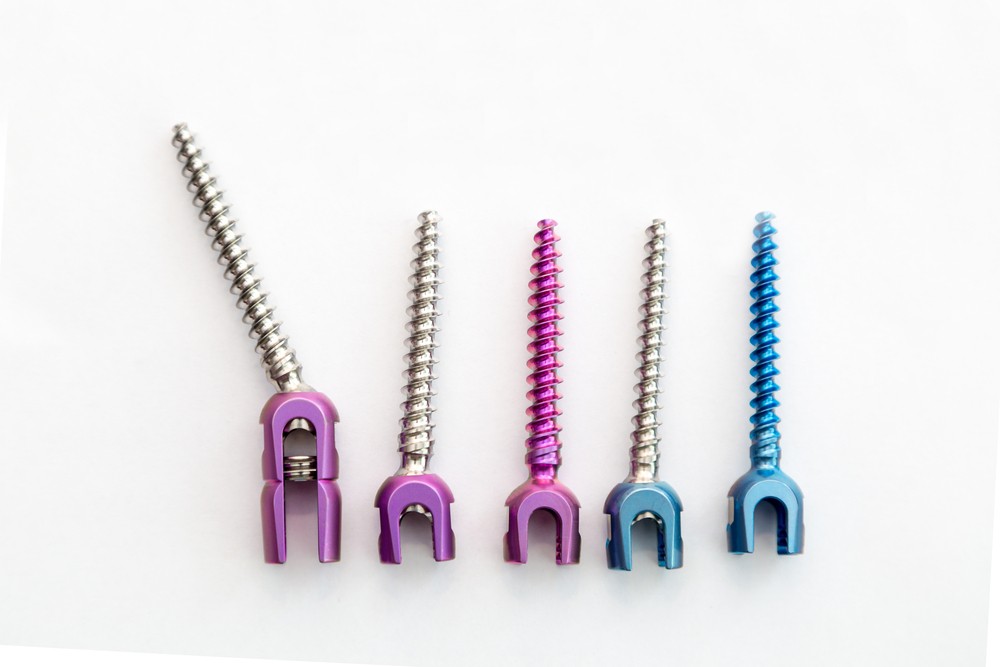Regardless of whether an orthopedic surgery involves the internal fixation of bones or placing an implant or the use of prosthetics, orthopedic screws are critical. These screws are omnipresent hardware devices used in surgeries either by themselves or in tandem with other devices/ implants for effective fixation of bones.
Orthopedic bone screws are, in fact, one of the oldest orthopedic implants that are used for fixing fractured bones. Bones are known to heal faster and better when pressed together using orthopedic screws.
Read on to find out more about orthopedic bone screws and its different types.
Othopedic Screws: An Overview
Orthopedic screws are metal-made hardware devices that are designed carefully for use inside the human body for the fixation of fractures. Though they resemble screws one would find in the hardware store, bone screws are specifically made to provide compression in the injured area, reduce gap between bone fragments and help the bones mend faster. Orthopedic screws help restore stability in the injured area. These screws also minimize the stress on implants, thus, enabling them to do their job properly.
Based on the seriousness and location of the fracture, the surgeon decides whether to use the screw by itself or use it in synchronization with other orthopedic implants. The surgeon decides the type, size and material of screw to use based on the needs of the patient. Bone screws may also be permanently implanted based on the need and context.
The Design of Orthopedic Screws
When it comes to most commonly used spinal implants, they can be categorised into two types – Fusion and Non-Fusion.
Head is the flattened top part of the screw that is used to insert it inside the bone. Based on the head configuration chosen, the type of screwdriver will differ.
Tip: The end part of the screw is the tip and is of 3 types – non-tapping, self-tapping and self-drilling
Length is the distance between the head and tip of the orthopedic screw. Different surgeries and fixations require different types of screw lengths
Diameter is of 2 types – inner and outer and care must be taken in measuring the diameter of bone screws. The outer diameter measures the thread-to-thread thickness of the bone screw while the inner diameter measures the narrowest diameter around the base of the thread. The pilot hole diameter must be the same as the inner diameter before screw implantation.
Pitch is the distance traveled by the bone screw with each 360-degree turn. When the pitch is finer, the surgeon has to make more turns to insert the screw. Given the depth of the cortex, the greater the number of turns of the spiral thread, the greater the pull-out resistance
Materials Types of Orthopedic Screws
Since orthopedic screws go inside the human body, into the bones, it is critical that they are made of highly non-reactive materials that have high biochemical compatibility and inertness. The materials used must not cause corrosion or allergic reactions inside the body. This is why orthopedic implants and screws are typically made using the following 3 materials:
- Titanium
- Stainless Steel
- PEEK
- Bio-absorbable materials such as polylactic acid, poly-L-lactic acid and polyglycolic acid.
(These screws are absorbed by the body and need not be removed later.)
The Types of Orthopedic Screws
Orthopedic screws are classified based on the type of bone or the location in which they are used. Here are some common types used in surgeries.
Cortical Screws
Cortical bone screws are specifically designed for use in cortical bones/ hard bone tissues such as the shaft of long bones. They are designed to have smaller threads and thus, a smaller pitch to increase the holding power of the screw. Though they are fully-threaded screws, they can be customized for partially-threaded configuration.
Cancellous Screws
Cancellous screws are designed for spongy bones that are softer and present at the ends. These screws are longer and have a larger pitch in comparison to cortical screws. These orthopedic screws have deeper threads and are available in fully and partially threaded configurations.
Pedicle Screws
Designed for spinal fusion and fractures, pedicle screws have a mobile-head, are threaded and available in different sizes. Their purpose is to treat spinal deformity or trauma and can be placed in the lumbar spine, thoracic vertebrae and sacral vertebrae.
Cannulated Screws
Cannulated screws are used both for the fixation of different fracture patterns, as well as, to pass a guidewire for the proper placement of the screws. Designed with a hollow shaft, these screws facilitate the guidewire for better alignment before the fixation of the screws. Cannulated screws can be tailored with cancellous and cortical configurations.
Herbert Screws
Herbert screws are headless screws built for the internal fixation of bones, including joint cartilages. Owing to their headless design, they do not block joint movement even after the settlement of the screw. They are commonly used in the fixation of radial head, scaphoid, capitellum and osteochondral fractures.
Malleolar Screws
Most commonly used for the fixation of ankle fractures and other small fragments in the cancellous bones, Malleolar screws enable inter-fragmental compression of bone plates. These orthopedic screws have a smooth shaft and typically have a partially threaded configuration.
Gesco, an award-winning medical device manufacturer in India, has a 6-decade legacy of developing, manufacturing and perfecting cutting-edge surgical instruments and implants. Backed by world-class craftsmanship, avant-garde technology and top-notch manufacturing expertise, Gesco’s surgical implants and instruments are made using superior quality raw materials in sterile conditions.
Gesco Healthcare manufactures a wide range of superior-quality, precise, sterile and surgery-ready orthopedic screws that are completely customizable to suit the needs of the client, howsoever complex or voluminous the need may be.

